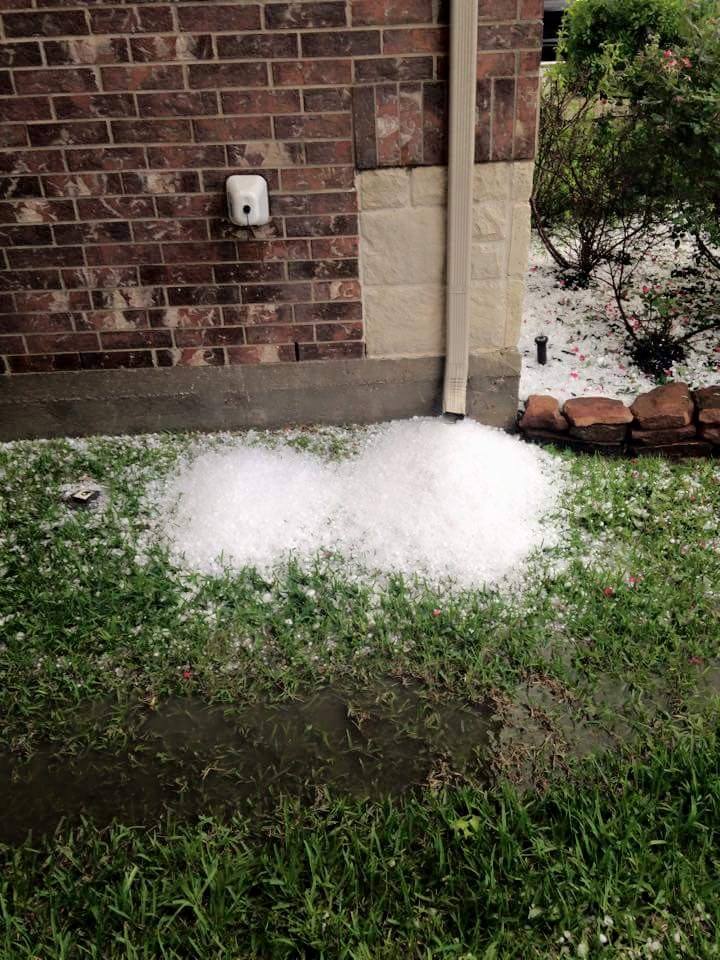We all intuitively know we need gutters on our home, but maybe we don’t quite understand the reasons why. When we do know those reasons, we don’t know which gutters are best or how to select the right set for our home. Use our FAQ guide to gutters to help take away some of the confusion surrounding a home essential!

1. Do I Need Gutters?
Whether you need gutters is probably the first question you’ll ask when moving into a home that doesn’t have a gutter system. Or if your gutters have seen better days, you may question whether you need to replace them: is it necessary?
The answer is that gutters are vital to your home’s maintenance! Gutters direct the rainwater away from your home’s walls, foundation, and roof keeping your Texas home from experiencing the damaging effects of water. Did you know one inch of rainfall gushing off an average-sized roof adds up to 1,900-gallons?
2. How Do Gutters Work?
To understand how gutters work, let’s look at the different parts of the gutter system. There is the gutter, end cap, downspout, downspout bracket, fascia bracket, and elbow. The gutter lies horizontally along the eave edges of the roof. They are open to catch the rainwater that flows off the roof. Rain falls into the channel, which redirects it to the downspout. The downspout is positioned vertically.

The elbow is at the bottom of the downspout and house. The elbow’s job is to change the direction of the downspout, so the water doesn’t puddle up beneath it. Instead, the elbow is turned slightly causing the water to shoot out and away from the house’s foundation and walls.
Sometimes you need a gutter extension to send the water a little further from the house. Water needs to be directed away from the home when there is no slope for the water to roll down once it reaches the elbow.
3. What Types of Gutters Are There?
There are two main types of gutters: seamless and standard. Seamless gutters consist of a channel without seams. The seamless system eliminates leaks, but you will need a professional to custom make these for you. Standard gutters contain pre-made sections that connect with connectors.
4. What Materials Are Used for Gutters?
According to Angie’s List, aluminum gutters are the most popular. This material is lightweight, budget-friendly, and resists corrosion. However, if you want something a bit sturdier, there are other options such as galvanized steel and copper. Steel is heavy and durable but may be prone to rust. Copper is an excellent material used mostly on luxurious homes.
Finally, you can use vinyl or plastic gutters. These are the least expensive but won’t hold up for as many years as the other materials and tend to fade in the Texas sun, as well.
5. Can I Get Gutters to Match My House?
Just because gutters are functional doesn’t mean they have to look ugly! Most gutters come in a wide variety of colors, or you can paint them! The only gutter system you don’t want to paint is the high-end copper because of its already brilliant color. Also, over time it develops a beautiful patina.
6. How Do I Take Care of My Gutters?
It’s essential to maintain your gutters so they will provide years of use. Gutters need to be inspected and cleaned at least twice a year. However, if your property has many trees, then you may want to have them inspected more frequently due to the possibility of debris build-up. It’s best to have a professional inspect and clean out your gutters as this will ensure it’s completed correctly. It may also secure your warranty, as well.
Maintaining your gutters is an essential part of home ownership. Now that you’re a little more familiar with this crucial home component, you’re ready to begin your project! For more help with your gutters and roofing in general, reach out to the Texas roofing professionals at Fitz Roofing for a FREE estimate! You can also download our free guide to finding the best Texas Roofing Company at this link!




